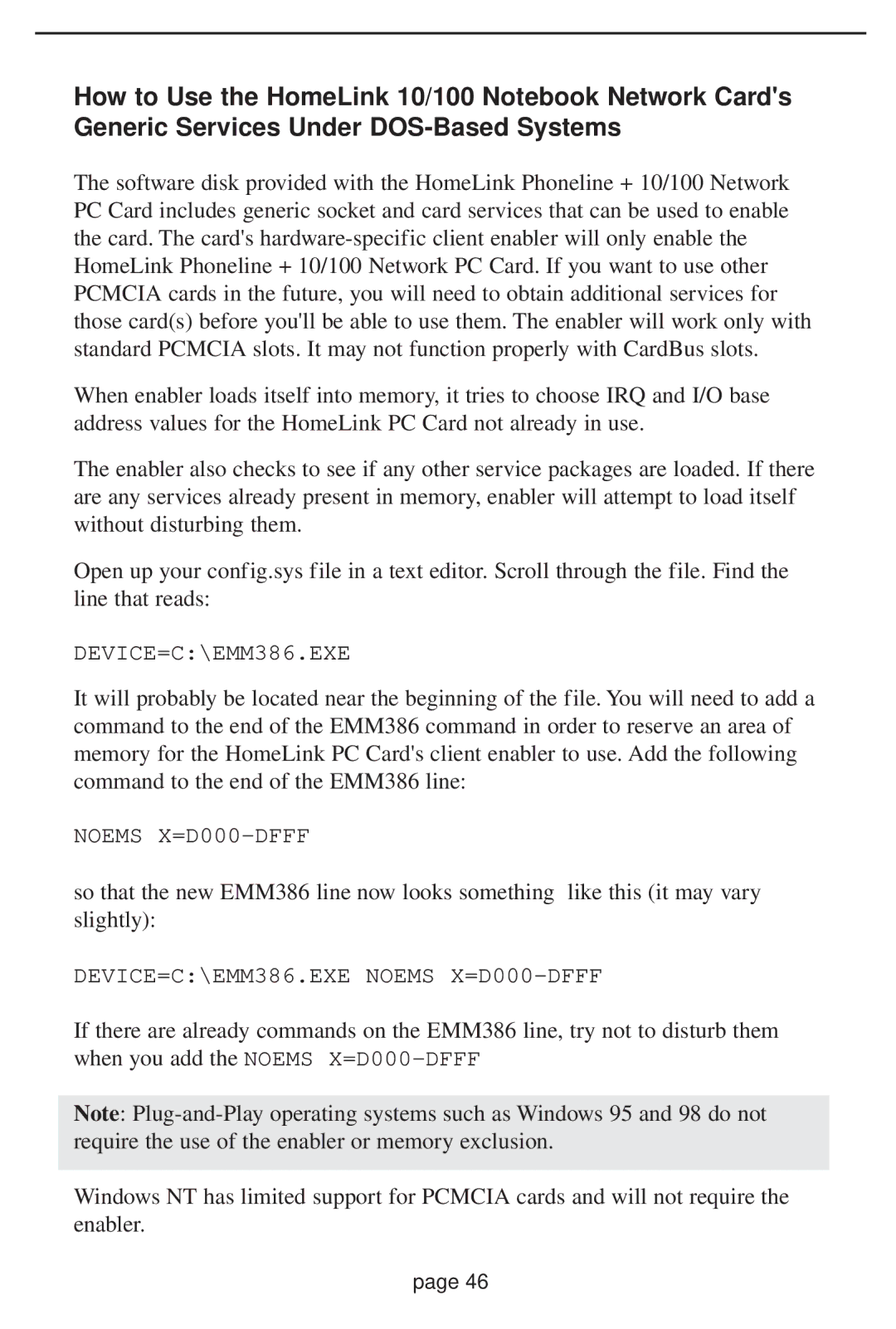
How to Use the HomeLink 10/100 Notebook Network Card's Generic Services Under
The software disk provided with the HomeLink Phoneline + 10/100 Network PC Card includes generic socket and card services that can be used to enable the card. The card's
When enabler loads itself into memory, it tries to choose IRQ and I/O base address values for the HomeLink PC Card not already in use.
The enabler also checks to see if any other service packages are loaded. If there are any services already present in memory, enabler will attempt to load itself without disturbing them.
Open up your config.sys file in a text editor. Scroll through the file. Find the line that reads:
DEVICE=C:\EMM386.EXE
It will probably be located near the beginning of the file. You will need to add a command to the end of the EMM386 command in order to reserve an area of memory for the HomeLink PC Card's client enabler to use. Add the following command to the end of the EMM386 line:
NOEMS
so that the new EMM386 line now looks something like this (it may vary slightly):
DEVICE=C:\EMM386.EXE NOEMS
If there are already commands on the EMM386 line, try not to disturb them when you add the NOEMS
Note:
Windows NT has limited support for PCMCIA cards and will not require the enabler.
page 46
